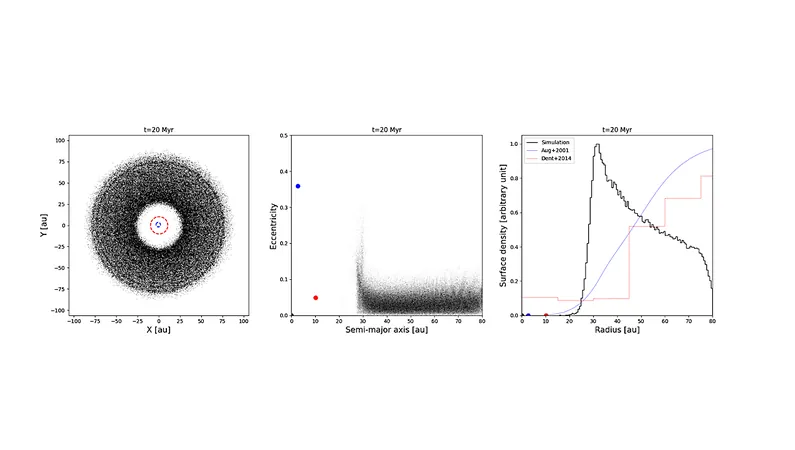
Unveiling the Secrets of the Beta Pictoris Planetary System: Is There More Than Meets the Eye?
2025-01-12
Author: Emily
Introduction
The Beta Pictoris system, a fascinating celestial neighborhood, is not just captivating for its two known planets but also for its striking dusty debris disk. This unique configuration offers astronomers a perfect opportunity to delve into the intricacies of planetary formation and evolution at a critical juncture, where giant planets have already taken shape, most of the protoplanetary gas has vanished, and the possibility of rocky terrestrial planets is on the horizon.
The Search for Additional Planets
Recent explorations aim to answer a tantalizing question: Could there be additional planets lurking beyond the outermost known planet, Beta Pictoris b? This inquiry is particularly important due to a notable discrepancy—predictions suggest the inner boundary of the disk cavity should be around 28 astronomical units (au), but observations place it at an astonishing 50 au. This gap has sparked a search for potential unseen planets that could help bridge this divide.
Dynamical Modeling Techniques
Utilizing sophisticated dynamical modeling techniques, researchers are examining the debris disk's behavior, particularly how its inner edge has been sculpted. The approach involves simulating the potential gravitational effects of one or two additional planets situated beyond Beta Pictoris b, all while keeping them coplanar with the debris disk. Researchers employed the RMVS3 symplectic integrator for their N-body simulations, which allowed them to explore various parameters—mass, semi-major axis, and eccentricity—that these hypothetical planets could possess.
Intriguing Findings
The findings of these simulations are intriguing. A hypothetical additional planet with a low eccentricity of approximately 0.05, a mass between 0.15 and 1 times that of Jupiter, and an orbit situated between 30 and 36 au, aligns well with the observed features of the debris disk. Moreover, the study considered the possibility of higher eccentricities and even two lighter planets instead of one, providing alternative explanations for the data.
Challenges and Future Observations
Despite the promising results that one or even two additional planets could be influencing the disk's inner edge, these speculative celestial bodies remain elusive, lurking below the current observational thresholds of high-contrast imaging techniques. As technology advances, the call for future observational efforts grows louder, with astronomers hopeful that enhanced sensitivity will ultimately lead to the detection of these hypothesized worlds.
Conclusion
The Beta Pictoris system continues to capture the imagination of scientists and enthusiasts alike, hinting at the potentially rich and diverse landscapes of planetary systems beyond our own. Stay tuned as researchers strive to uncover the mysteries of this captivating system!



 Brasil (PT)
Brasil (PT)
 Canada (EN)
Canada (EN)
 Chile (ES)
Chile (ES)
 Česko (CS)
Česko (CS)
 대한민국 (KO)
대한민국 (KO)
 España (ES)
España (ES)
 France (FR)
France (FR)
 Hong Kong (EN)
Hong Kong (EN)
 Italia (IT)
Italia (IT)
 日本 (JA)
日本 (JA)
 Magyarország (HU)
Magyarország (HU)
 Norge (NO)
Norge (NO)
 Polska (PL)
Polska (PL)
 Schweiz (DE)
Schweiz (DE)
 Singapore (EN)
Singapore (EN)
 Sverige (SV)
Sverige (SV)
 Suomi (FI)
Suomi (FI)
 Türkiye (TR)
Türkiye (TR)
 الإمارات العربية المتحدة (AR)
الإمارات العربية المتحدة (AR)